8 John Everett Millais, Ophelia
Sir John Everett Millais, Ophelia
Originally from Smarthistory and Dr. Rebecca Jeffrey Easby, Dr. Beth Harris and Dr. Steven Zucker
The botanical accuracy of this painting is impressive, but its production wasn’t without its challenges for Millais.
Sir John Everett Millais, Ophelia, 1851–52, oil on canvas, 76.2 x 111.8 cm (Tate Britain, London). Speakers: Dr. Beth Harris and Dr. Steven Zucker
A Pre-Raphaelite masterpiece
Ophelia is considered to be one of the great masterpieces of the Pre-Raphaelite style. Combining his interest in Shakespearean subjects with intense attention to natural detail, Millais created a powerful and memorable image. His selection of the moment in the play Hamlet when Ophelia, driven mad by Hamlet’s murder of her father, drowns herself was very unusual for the time. However, it allowed Millais to show off both his technical skill and artistic vision.
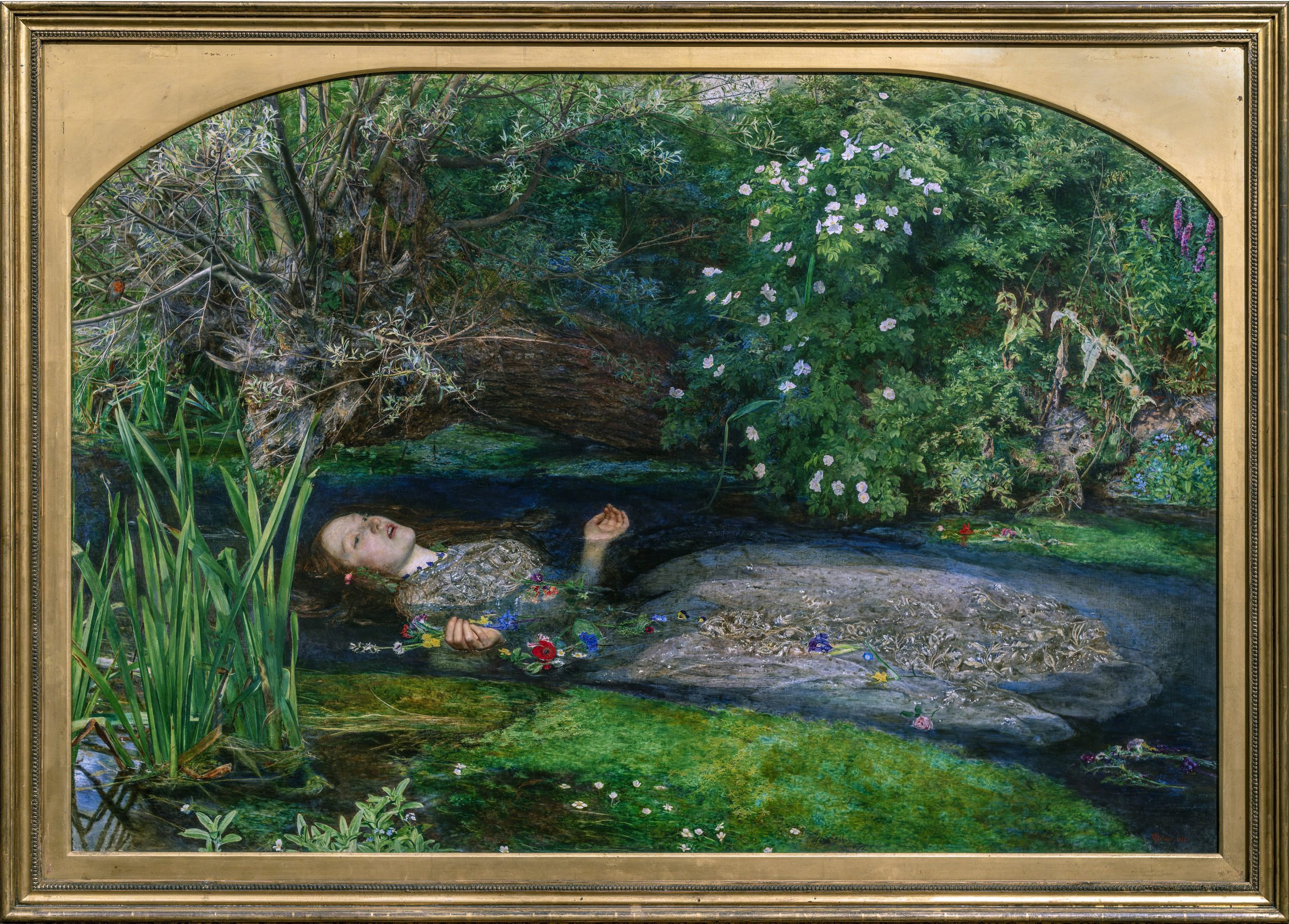
The figure of Ophelia floats in the water, her mid section slowly beginning to sink. Clothed in an antique dress that the artist purchased specially for the painting, the viewer can clearly see the weight of the fabric as it floats, but also helps to pull her down. Her hands are in the pose of submission, accepting of her fate.
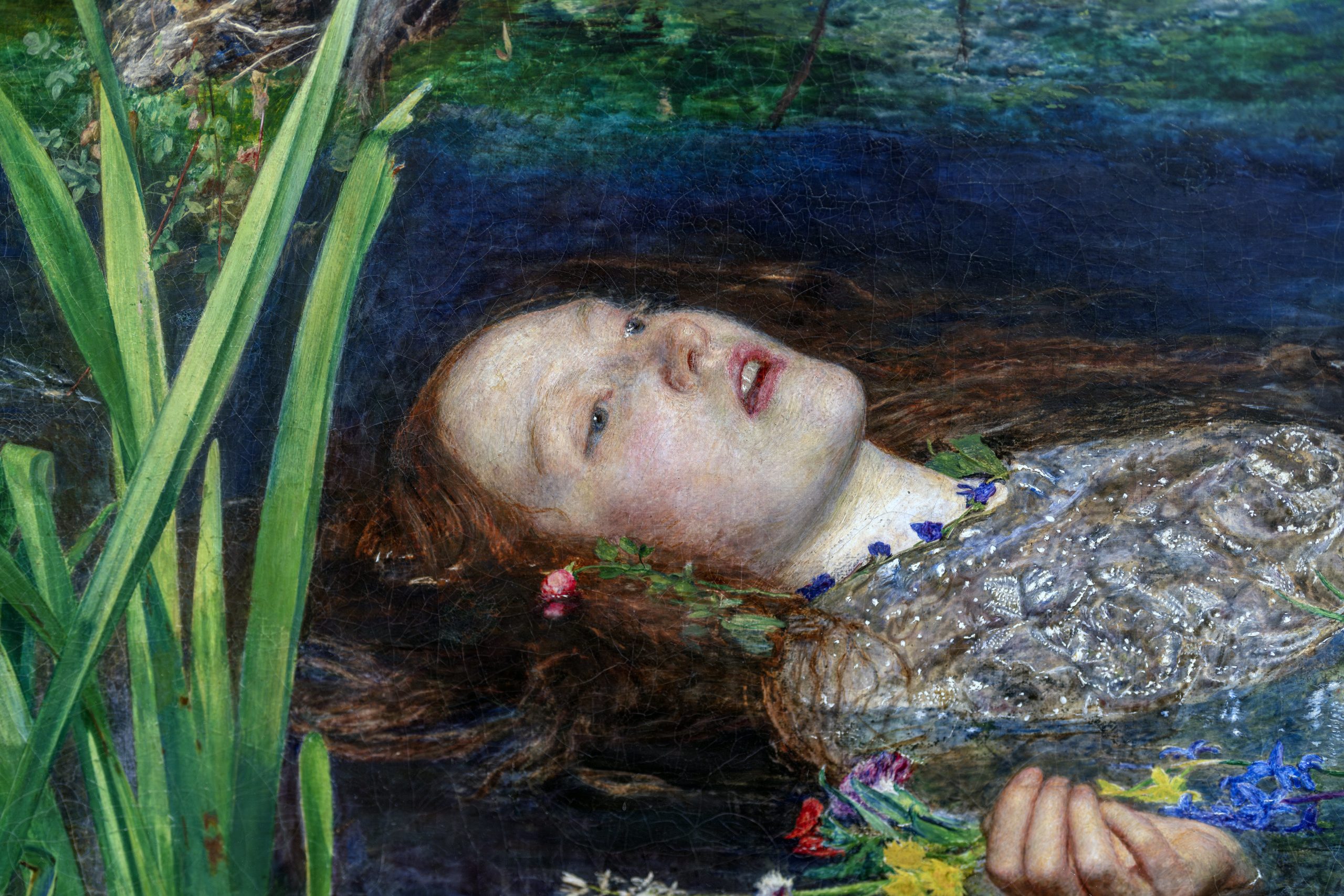
She is surrounded by a variety of summer flowers and other botanicals, some of which were explicitly described in Shakespeare’s text, while others are included for their symbolic meaning. For example, the ring of violets around Ophelia’s neck is a symbol of faithfulness, but can also refer to chastity and death.
The hazards of painting outdoors
Painted outdoors near Ewell in Surrey, Millais began the background of the painting in July of 1851. He reported that he got up everyday at 6 am, began work at 8, and did not return to his lodgings until 7 in the evening. He also recounted the problems of working outdoors in letters to his friend Mrs. Combe, later published in the biography of Millais by his son J.G. Millais.
“I sit tailor-fashion under an umbrella throwing a shadow scarcely larger than a halfpenny for eleven hours, with a child’s mug within reach to satisfy my thirst from the running stream beside me. I am threatened with a notice to appear before a magistrate for trespassing in a field and destroying the hay.”
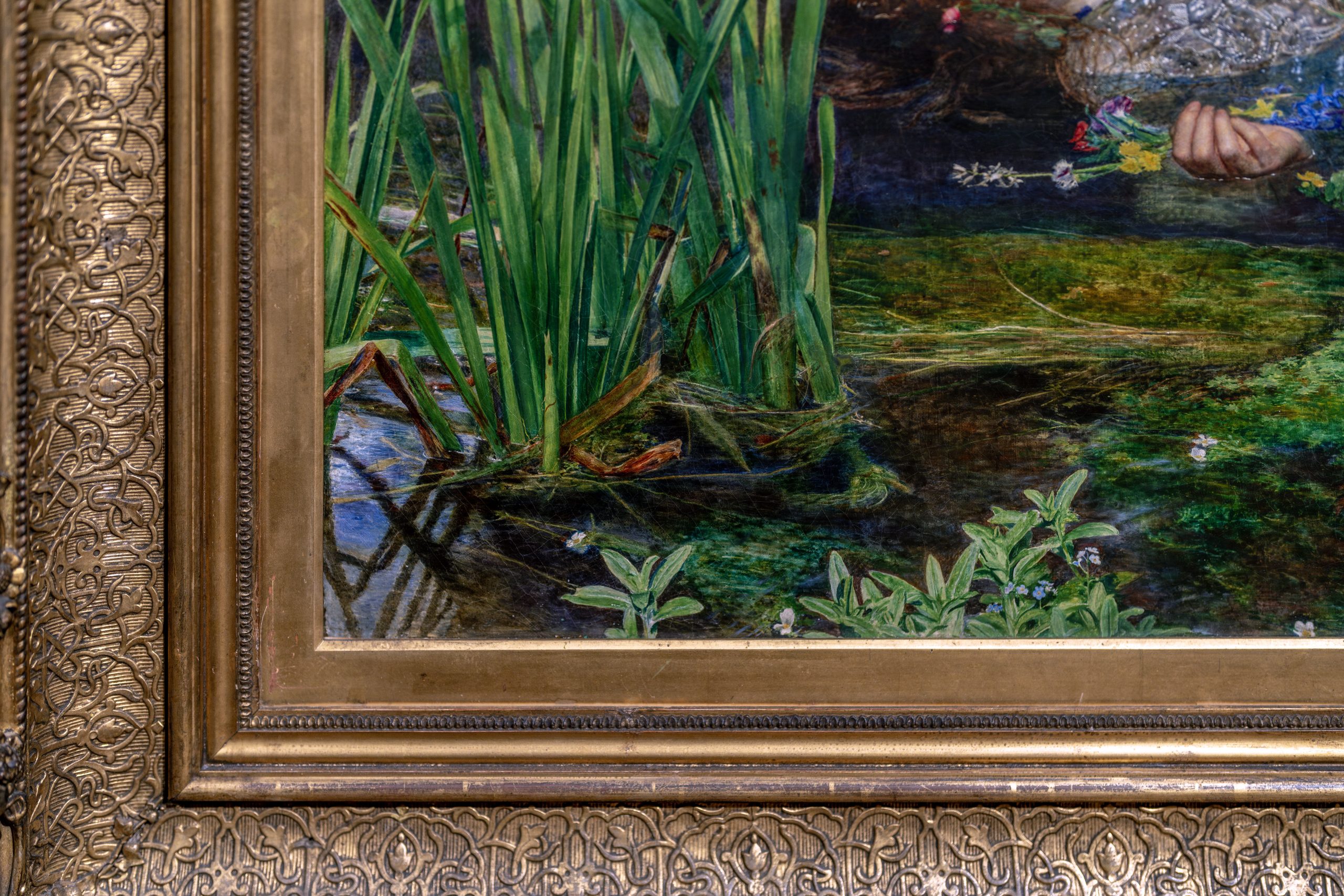
The hazards of being an artist’s model
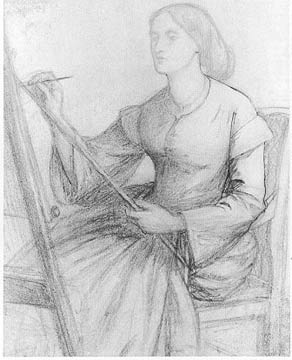
His problems did not end when he returned to his studio in mid-October to paint the figure of Ophelia. His model was Elizabeth Siddal who the Pre-Raphaelite artists met through their friend Walter Howell Deverell, who had been impressed by her appearance and asked her to model for him.
When she met the Pre-Raphaelites Siddal was working in a hat shop, but she later became a painter and poet in her own right. She also become the wife and muse of Dante Gabriel Rossetti. Millais had Siddal floating in a bath of warm water kept hot with lamps under the tub. However, one day the lamps went out without being noticed by the engrossed Millais. Siddal caught cold, and her father threatened legal action for damages until Millais agreed to pay the doctor’s bills.
Millais becomes a success
Ophelia proved to be a more successful painting for Millais than some of his earlier works, such as Christ in the House of his Parents. It had already been purchased when it was exhibited at the Royal Academy in 1852. Critical opinion, under the influence of John Ruskin, was also beginning to swing in the direction of the PRB (the Pre-Raphaelite Brotherhood). The following year, Millais was elected to be an Associate of the Royal Academy, an event that Rossetti considered to be the end of the Pre-Raphaelite Brotherhood.
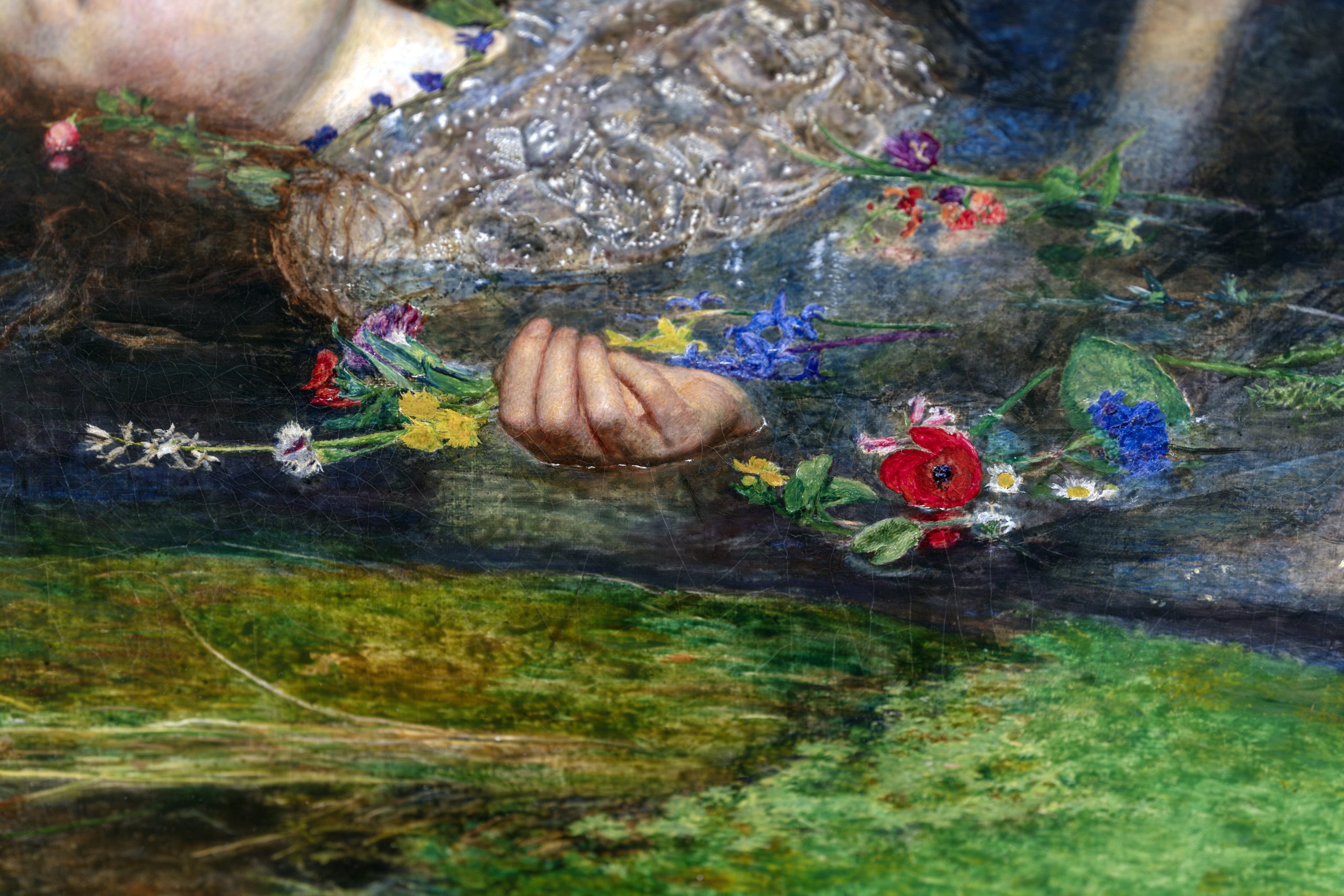
The execution of Ophelia shows the Pre-Raphaelite style at its best. Each reed swaying in the water, every leaf and flower are the product of direct and exacting observation of nature. As we watch the drowning woman slowly sink into the murky water, we experience the tinge of melancholy so common in Victorian art. It is in his ability to combine the ideals of the Pre-Raphaelites with Victorian sensibilities that Millais excels. His depiction of Ophelia is as unforgettable as the character herself.
Excerpt from Shakespeare, Hamlet, Act IV, Scene VII:
There, on the pendent boughs her coronet weeds
Clambering to hang, an envious sliver broke;
When down her weedy trophies and herself
Fell in the weeping brook. Her clothes spread wide,
And, mermaid-like, awhile they bore her up;
Which time she chanted snatches of old tunes,
As one incapable of her own distress,
Or like a creature native and indued
Unto that element; but long it could not be
Till that her garments, heavy with their drink,
Pull’d the poor wretch from her melodious lay
To muddy death.
Dr. Rebecca Jeffrey Easby, Dr. Beth Harris and Dr. Steven Zucker, “Sir John Everett Millais, Ophelia,” in Smarthistory, February 7, 2025, accessed April 28, 2025, https://smarthistory.org/millais-ophelia/.
Media Attributions
- full-frame
- Bust
- reeds
- 1ad6f2c613def27e9348a3a39f21ff216c0adeef
- hand
